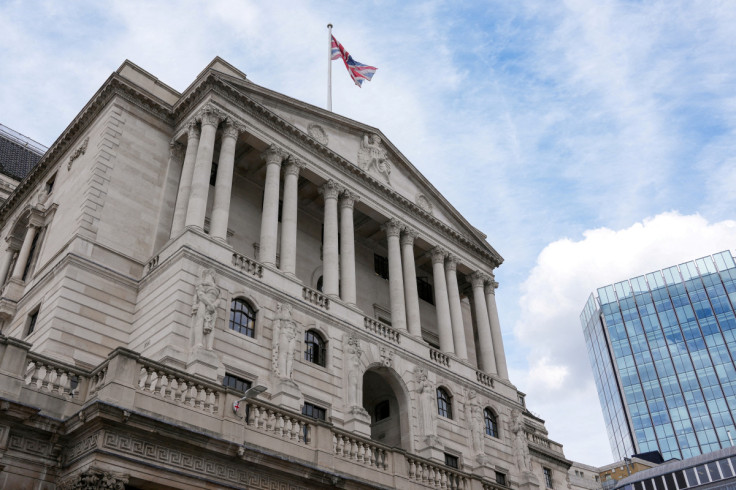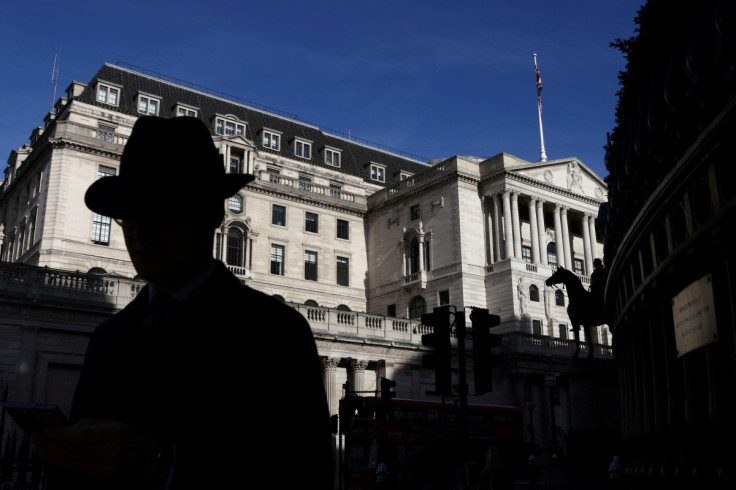Bank Of England Readies For Biggest Rate Rise Since 1989

The Bank of England looks on track to raise interest rates by three quarters of a percentage point to 3% later on Thursday, its biggest rate rise since 1989 as it battles the highest inflation in 40 years.
The BoE has faced political and financial market turmoil since its last rate rise on Sept. 22, a day before former Prime Minister Liz Truss's government launched an unfunded 45 billion-pound ($52 billion) package of tax cuts.
The policy was aimed at staving off recession and spurring long-term growth - but instead it pushed sterling to a record low against the U.S. dollar, forced the BoE to prop up the bond market and led to Truss's resignation.
Markets are now more stable, with British government borrowing costs broadly back to where they were before the upheaval. On Tuesday, the BoE was able to begin selling bonds from its 838 billion-pound quantitative easing stockpile.
However, fundamental problems for Britain's economy remain. Consumer price inflation returned to a 40-year high of 10.1% in September and is likely to have risen further last month when regulated energy prices jumped, despite costly subsidies.
At the same time, the economy is slowing sharply. Purchasing managers' data slid in October to its weakest since January 2021 when the economy was mired in a COVID-19 lockdown.
"The BoE is faced with an incredibly difficult balancing act of orchestrating large rate hikes in a recessionary economy," said Shweta Singh, a senior economist at British fund manager Cardano.
Forty-six of 53 economists polled by Reuters expected the BoE to raise rates to 3% this month.
Other Western central banks face similar challenges. Inflation has rocketed due to labour shortages, COVID-19 supply-chain bottlenecks and - in Europe's case - soaring energy bills since Russia invaded Ukraine in February.
The U.S. Federal Reserve raised its key interest rate by 0.75 percentage points on Wednesday to a range of 3.75% to 4.0%, and the European Central Bank increased its deposit rate by the same amount to 1.5% last week. But the Fed said future rate rises might come in smaller steps.
"STUMBLING IN THE DARK"
The BoE's task is made especially tricky by a lack of clarity over government policy.
While most of Truss's tax cuts have been reversed, and new Prime Minister Rishi Sunak has indicated there will need to be a squeeze on public spending and potentially higher taxes, the scale will not be clear until a fiscal statement on Nov. 17.
The government's energy subsidies are due to cease in April, so the BoE may forecast a fresh peak for inflation when it updates its forecasts on Thursday.
"If September's dilemma for the Bank was that they might not be doing enough tightening, November's dilemma is that they end up doing too much. It seems therefore that the Monetary Policy Committee is still stumbling around in the dark," Cardano's Singh said.
Investors expect the BoE's Bank Rate to hit 3.5% in December and 4.75% next May - the highest since 2008 though below the peak of around 6% projected during last month's market turmoil.
Despite the weak economy, the BoE is worried about inflation pressures from a tight labour market and expectations that consumer price inflation will only slowly return to its 2% target.
Unemployment in the three months to August was the lowest since 1975 at 3.5%, partly due to record numbers of workers quitting the job market, while average wages were 6% higher than the year before.
($1 = 0.8730 pounds)

© Copyright Thomson Reuters 2024. All rights reserved.





















